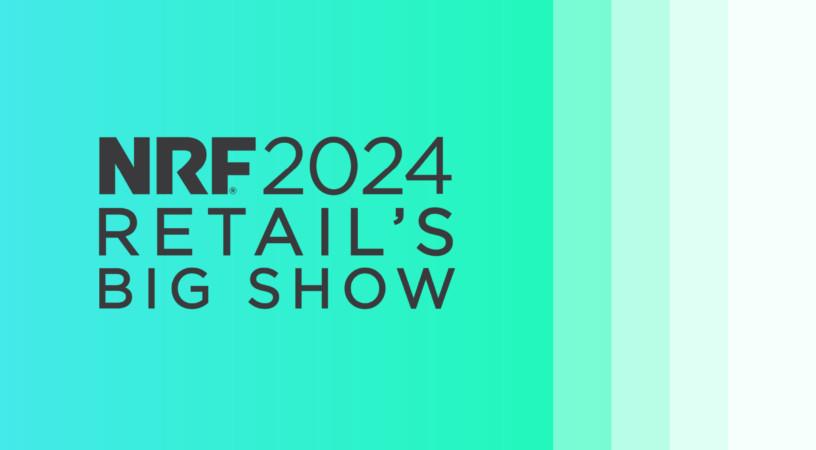Wiliot, the Internet of Things pioneer whose IoT platform is enabling trillions of “things” to gain intelligence, has brought its industry-changing visibility technology to NRF 2024. Attendees could see first-hand that retail running on ambient IoT is possible today and experience the real-time supply chain visibility it enables for retailers, manufacturers, distributors — even consumers.
“Wiliot’s customers, which include some of the biggest names in retail, are leveraging our platform to optimise staffing, improve the shopping experience, reduce waste, and drive up sales,” said Roee Zeiler, Wiliot’s Chief Financial & Revenue Officer. “It provides retailers with complete visibility of all products in their supply chains and stores – which is the foundation for better retail operations, from real-time inventory management to increasingly popular buy-online-pickup-in-store (BOPIS) sales models. This real-time, end-to-end visibility of all products everywhere represents the biggest disruption in retail since the price tag.”
Connecting the digital and physical worlds
Wiliot’s ambient IoT Visibility Platform, recently named one of TIME’s Best Inventions of 2023 and Fast Company’s 2023 Next Big Things in Tech, connects the digital and physical worlds through the company’s IoT Pixels, which are stamp-sized, self-powered compute devices that cost pennies.
These IoT Pixels can attach to any “thing” and connect it to the internet. Not just expensive things like cars, appliances, and shipping containers, but also things like fruits, veggies, vaccine vials, clothes, crates, and just about everything else. Once connected, products transmit real-time, item and case-level information about their location, temperature, humidity, and even carbon footprint, giving retailers the data they need to improve supply chain performance, ensure product safety, and optimise staff time.
“The market for ambient IoT solutions in retail is indeed exploding as more and more companies realise the benefits of total visibility,” said Dominique Bonte, Vice President, Verticals/End Markets, ABI Research. “We are transitioning from billions of items that are manually scanned or seen once at a choke point, to an addressable market of trillions of things that can be sensed continuously, end-to-end, without manual scanning.”
Ambient IoT in action at NRF 2024
During NRF 2024, Wiliot demonstrated ambient IoT in action, tracking products in transit, throughout a warehouse, and within a retail store, showing in each scenario how the data generated yields a host of important benefits. Wiliot’s NRF demonstrations showcased three critical uses that are now scalable thanks to ambient IoT:
- Real-time monitoring of items in transit. Through truck-based IoT gateways and an integrated telematics system, attendees saw how the Wiliot Visibility Platform senses products at a case level as they move through the supply chain. The capability is currently being rolled out by a major U.S. retailer, eliminating misloads, mistaken deliveries, and pervasive handling issues caused by case-level temperature fluctuations. Telematics solution provider: IoT services company Montage Connect
- Real-time location of items in a store. Wiliot’s item-level location tracking unlocks a wealth of retail intelligence. NRF 2024 attendees were able to see how the Wiliot Visibility Platform is reinventing inventory management and store design because staff know exactly what’s in store and where, freeing them to engage with customers in new ways. Avery Dennison’s atma.io connected product cloud platform unlocks the power of connected products by assigning unique digital IDs to every item, providing end-to-end traceability.
- No-labor compliance with food safety regulations. Wiliot’s Visibility Platform automatically generates the traceability data required to meet the reporting requirements of Rule 204 of the Food Safety Modernization Act (FSMA), which goes into effect in January 2026. At NRF 2024, Wiliot demonstrated the platform’s ability to capture Critical Tracking Event data (such as accurate receiving events) and support total supply chain and cold chain visibility through digital product passports (DPP) and the company’s AI-based Living Web browser, developed in conjunction with iFoodDS and IBM Food Trust.
No-labour inventory sensing enabled by ambient IoT represents a paradigm shift away from current RFID scanning processes. Although it’s not a replacement for retail labour, its automation enables vastly superior efficiency and accuracy, allowing retailers and supply chain partners to redeploy valuable workers in business-enhancing roles.
Developing an Ambient IoT Ecosystem
Working with the biggest names in retail and collaborating with leading enterprise software companies, Wiliot has developed the integration ecosystem necessary to deliver turnkey ambient IoT solutions for retailers. For example, their enterprise application integration with Montage Connect pulls together Wiliot Visibility Platform data, information from delivery trucks, heat maps from temperature sensors, and other logistics data into a dashboard view of the supply chain. And its open-sourced Living Web mobile Augmented Reality (AR) browser app represents one of the first enterprise integrations of a digital product passport.
With Living Web, consumers can sense nearby inventory without labour-intensive scanning using their smartphones and Wiliot IoT Pixels affixed to retail products, and pull up detailed information about their origins, composition, temperature in transit, carbon footprint, and more, collected across various systems. This is an increasingly important application of the Visibility Platform, especially considering the European Union’s Strategy for Sustainable and Circular Textiles, which requires products sold in the EU to carry Digital Product Passports by 2030.
“This is the hockey-stick moment for ambient IoT and the breadth of ambient IoT applications shows the depth of our innovation,” Zeiler concluded. “Having arrived in the retail market in 2023, ambient IoT is now positioned for exponential growth in 2024, thanks to technological advancement; manufacturing scale; large, live deployments; and successful integration with a growing ecosystem of enterprise apps. Retailers need ambient IoT, and ambient IoT is here now.”


